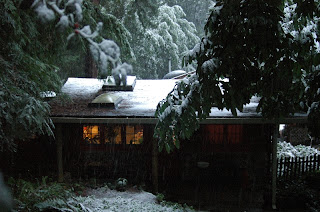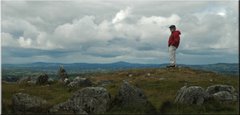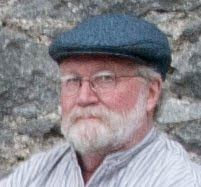Sorry, Dave... but the seats are a good start, anyway. It'll be full of stars pretty soon.
My last entry about the progress of the DeAnza Planetarium renovation was ten days ago. At that time, it didn't have any seats. Ten days from today, the spring quarter begins -- and eight hours a day of classes will be taught in the facility -- for the first time in more than a year -- starting then.

Having seats for the students would be a good thing, so I'm glad to see them.
There are 139 seats in the new configuration (there used to be 167 in the old, all-center facing orientation.) This smaller number of seats, all facing the same way, allows for a "stage" area for lectures or other kinds of performances.
We can have them all face the same direction because, unlike the MS-15, the Infinium-S can be rotated azimuthally to bring any part of the sky into front-view. It will be easy to fall under the illusion that the room is rotating, I'm sure.

The Infinium-S machine now looks much more like it will in use than it did ten days ago, too. The innards of the starball are no longer left exposed, and the peninsula (at front-left) for the wanderers is more fully enclosed. (All photos can be seen in larger format by clicking on them.)
 The starball. This part of the machine is mounted on a scissors-lift "elevator" and can be lowered about three feet for clearer sight lines in lectures, etc., when it's not in use.
The starball. This part of the machine is mounted on a scissors-lift "elevator" and can be lowered about three feet for clearer sight lines in lectures, etc., when it's not in use. The control area is rounding into shape now, too. Most of the furniture is now in place, including computer cabinetry and auxiliary desks. There will be two or three more flat-panel monitors working when everything is functioning fully, and those monitors will be specially-dimmable to extremely low brightness.
The control area is rounding into shape now, too. Most of the furniture is now in place, including computer cabinetry and auxiliary desks. There will be two or three more flat-panel monitors working when everything is functioning fully, and those monitors will be specially-dimmable to extremely low brightness.Even though classes are scheduled in the planetarium for the spring quarter, we won't be simulating the sky in them for at least the first month. There is still a lot of fine-tuning to be done by the Minolta team (they'll work 10pm to wee hours once classes are taking up most of the day hours), and training of the staff (including yours truly) will take a while. Our large astronomy classes have been taking up space in the College's lecture halls for more than a year now, though, causing headaches for the classroom schedulers, and they want us to move back into the planetarium at the earliest opportunity, whether our fancy projector is fully-functional yet or not.

... but it has some great assets besides the Infinium-S. Above is the instructors' cart (you can't see the wheels). The cart contains an "Elmo" digital visualizer, which can feed either transparencies or opaque media such as writing on paper through the video-projection system. This replaces black- or white-boards for notes, etc. It also contains a new computer with a T1 internet connection which, likewise, can be piped to video. The main classroom video projector is a very-high resolution, very bright (I don't have the specs for either resolution or lumens in front of me, but I've seen it in action -- even across the 50-foot throw from under the back of the dome to the front, it's plenty bright enough to have the house lights up so students can take notes easily while watching whatever is on the "screen," i.e. the ~20-ft. wide section of the dome onto which the video projects.)
Other goodies for classroom use that you can't see are high-end DVD and videotape players and a very fine audio-mixing board.
As the sign on the wall behind the cart says, there will also be an "assistive listening system" available on request for patrons or students who need it. I haven't seen this yet, but it is necessary, since closed-captioning during planetarium shows is not a technology that we have yet, and, of course, the College's signers can't work in the dark.
All photos in this post by S. Harrington, March 30th, 2007.
Standard disclaimer for any entries about my employers, DeAnza College: I don't speak for them, they don't speak for me, they pay me.
Standard disclaimer for any entries about my employers, DeAnza College: I don't speak for them, they don't speak for me, they pay me.















































